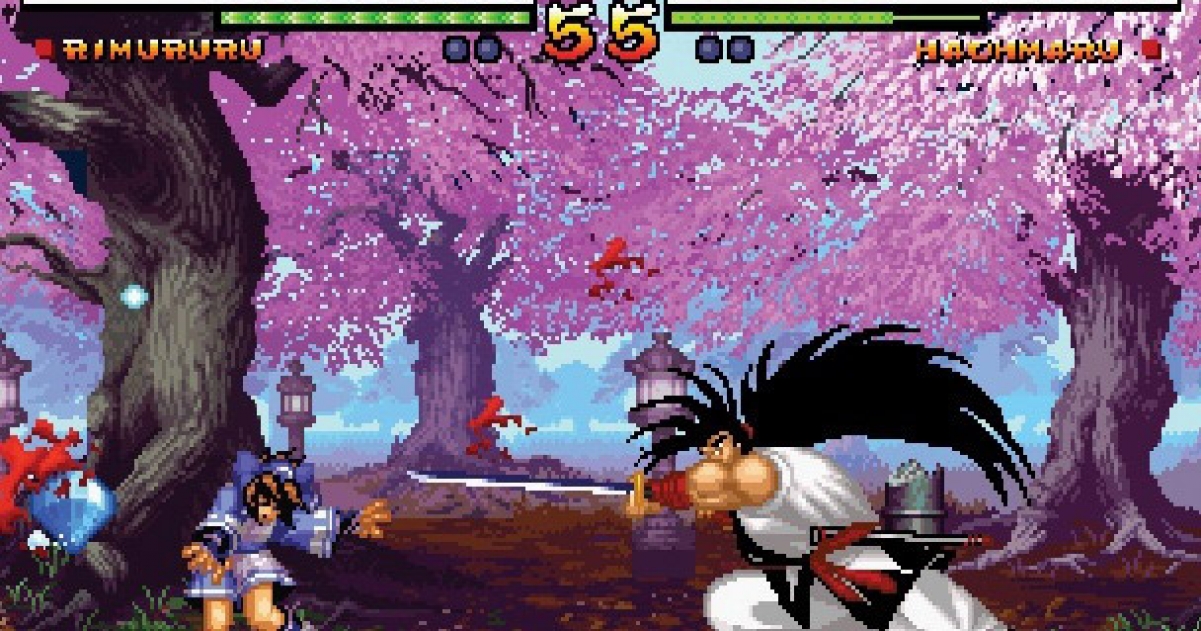
-1.jpg)
This stage also can be seen in Samurai Shodown (2019), in a new version and name. Can be seen a shack, a fishing rod, chopped firewood, a thicket, leaves and a mudding ground. Note: in each beginning of round, leaves can be seen flying on the wind.Features a red sky, a wooden cabin destroyed, vegetation, dead trees, destroyed flags and fences, besides crows.

Yamagata - Hanzo: The Mount Gassan, one of the three mountains of Dewa, in a windy day and in the right side.
Samurai shodown anthology media windows#
Features chandeliers, a red carpet, angel statues, a fireplace, candlesticks, a red carpet, two windows with curtains and guards, besides a painting with a knight and other man. This stage also can be seen in Samurai Shodown (2019), in a new version. Versailles, France - Charlotte: The salon of the De Colde state. A similar version can be seen in Samurai Shodown (2019).
Samurai shodown anthology media full#
Gairyu Isle at Night - Ukyo: In this version of the stage, can be seen the full moon and the starry sky, and the waves are more serene. Features moutains, vegetation, rocks on the left and crashing waves, besides the clouds and the sun. Gairyu Isle at Noon - Haohmaru: A rocky beach next to the ocean. The original cast of sword-wielding ronin are: Once the rage subsides, the gauge empties and attack power reverts to normal. This is an aspect which should be taken advantage of during the battle. Once the gauge fills up to the maximum, the gauge flashes POW and for a limited time, all the character's attacks inflict critical damage. The character himself changes color to indicate his rage. As your character takes damage, the gauge rises from green to yellow, then yellow to red. Samurai Shodown introduces the Rage Gauge. The cast of characters, like many other fighting games of its time, spanned from fighters across the globe, allowing a wide range of weaponry open for the players' enjoyment. To lessen the repetition of fights, a delivery man running in the background threw items such as chicken (that healed) or bombs, which could significantly change the outcome of a play. When a player landed a successful hit, the referee would lift the corresponding flag, letting everyone watching know who dealt the blow. Also during a match, a referee held flags representing each player (player 1 was white player 2 red). As to emphasize the distinction of this gameplay system, slow motion was added to intensify damage dealt from hard hits. The game quickly became renowned for its fast pace, focused more on quick, powerful strikes than the combos. True to its use of bladed weapons, the game also included copious amounts of blood. The game uses comparatively authentic music from the time period, rife with sounds of traditional Japanese instruments, such as the shakuhachi and shamisen, and a refined version of the camera zoom first found in Art of Fighting. The game is set in the late 18th century, in the Edo period, and all the characters wield white weapons. These warriors spurred by different motives and beliefs converge as if drawn together, battle, and make their way to the source of the chaos." This 'man,' Shiro Tokisada Amakusa, unleashes his unworldly forces and spreads his false creed in an attempt to lead the world to ruin.But in the midst of such calamities, there were still warriors who put their beliefs to the test. For this 'man,' once slain by the forces of the Tokugawa Shogunate, hate for the Shogunate is all he possesses along with newly acquired dark powers to bring it down. But one smiled as he surveyed the unfolding chaos rending the world asunder. "Plagues of unknown origin, strange phenomena, repeated outbreaks of war: these were enough to cause panic and plunge people into despair.


The official story, as given by SNK, is as follows:


 0 kommentar(er)
0 kommentar(er)
